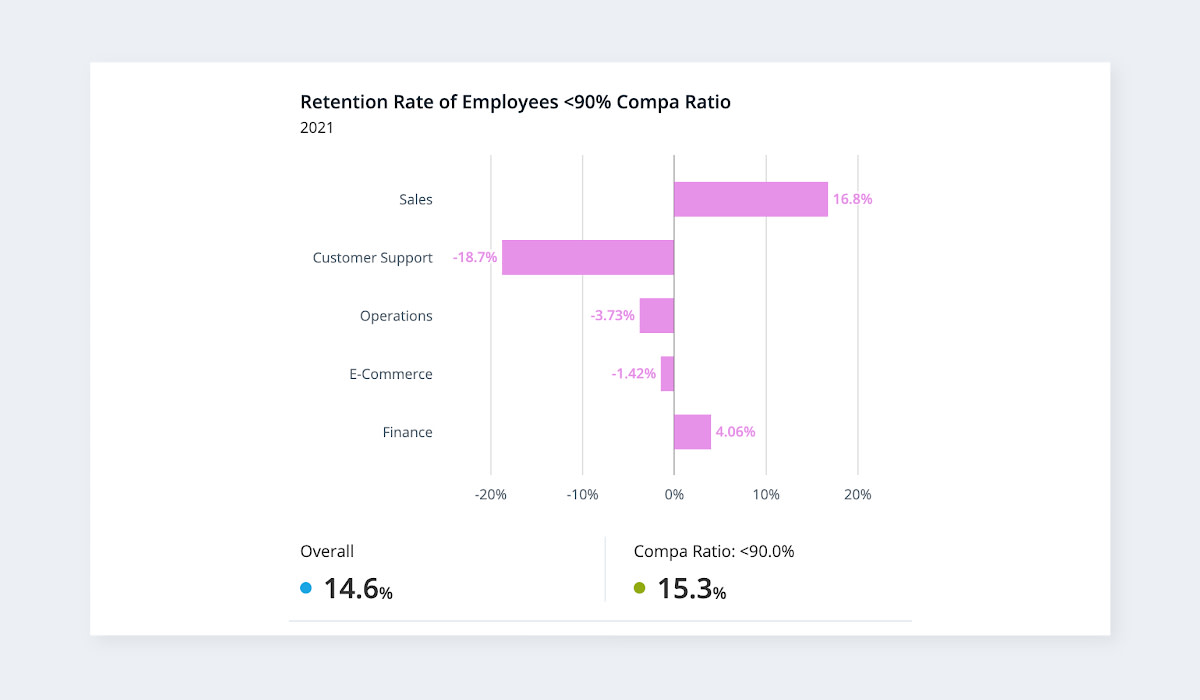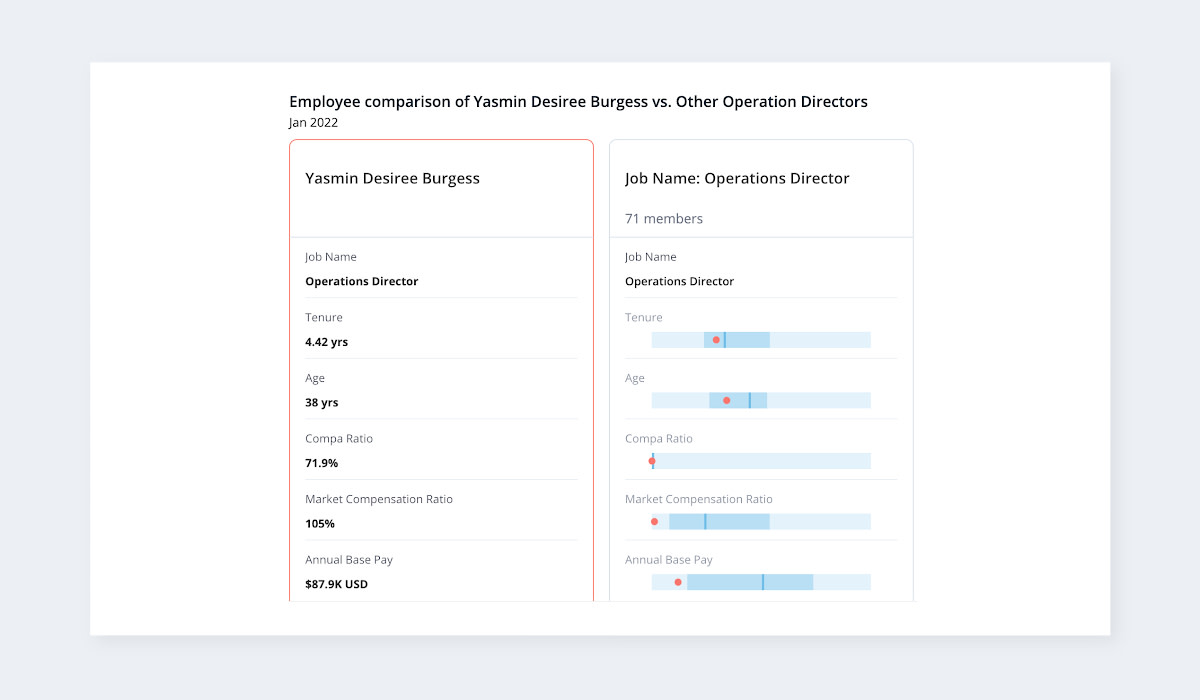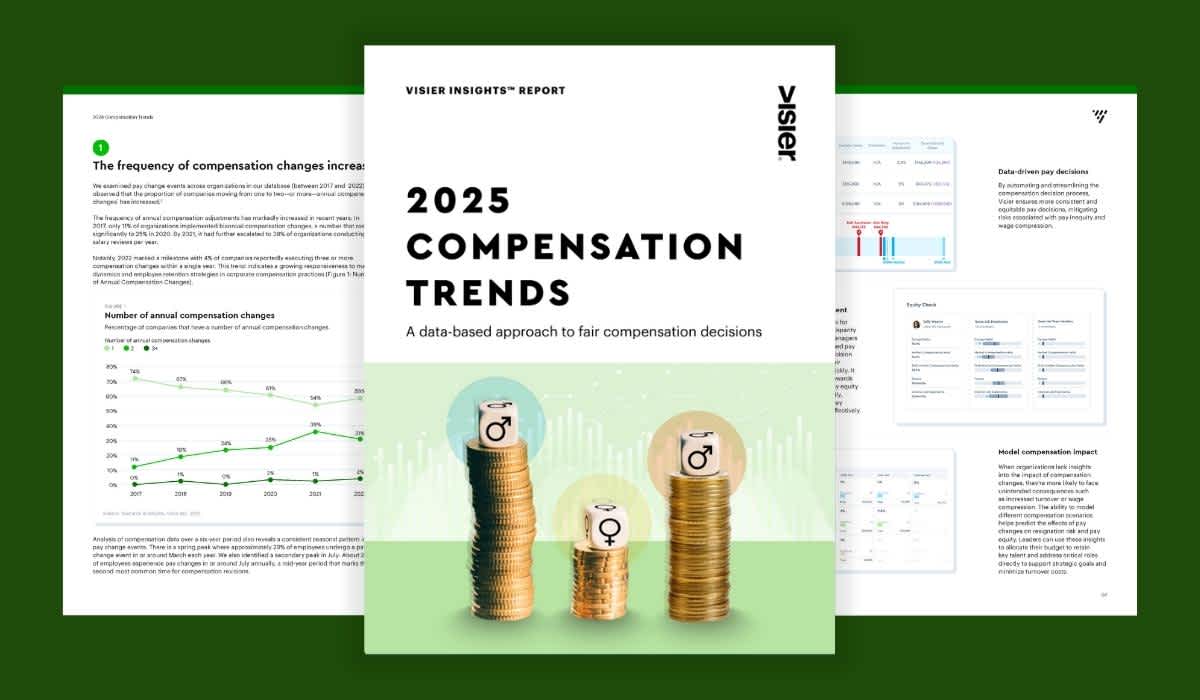Ask Visier: How can total rewards be used more effectively?
Compensation is just one aspect of a total rewards. Find out how to use total rewards more effectively to attract and retain key talent.

Employees expect more from employers than ever before, so a traditional view of pay as the only factor in employee compensation is too narrow, limited and won’t meet your employees’ needs. To address these broader workforce demands, consider adopting a more comprehensive view of pay beyond salary. Typically this is referred to as total rewards or the total package.
Why should an HR pro want to know how to use total rewards more effectively?
Because the key drivers of employee attrition tend to be non-monetary in nature (such as a poor manager, denied promotion, poor work-life balance, team turnover, an unwanted transfer, poor performance review, poor commute, etc.), monetary compensation effectively serves as the “cost” to an employer to retain an employee in the context of the broader workplace.
Stated differently, a total package perspective changes the company’s focus from trying to get salary “right” to trying to get the total package right, or at least making the decision to focus on certain attributes and offerings at the expense of others.

How are total rewards different from simple employee compensation?
HR professionals should understand each of the elements of their company’s total rewards package. The total package consists of three broad components: monetary compensation, non-monetary compensation, and work-life benefits.
Monetary compensation
includes salary, bonuses and other forms of variable cash compensation, stock awards, employee stock purchase plan, merit increases, etc.
Non-monetary compensation
includes recognition, job title, employer brand, professional development, promotions, discounted meals, onsite gym, transit passes, flexible work schedules, travel opportunities, and so on.
Work-life benefits
include quality medical and health coverage, holidays, vacation, retirement programs and 401k match, employee assistance and other life management programs, leave policies, and other employee benefits.
Merit increases, fair pay, and competitive compensation
Employees must see value in the monetary components across three perspectives. First, the rate of change in pay must align with their sense of personal performance and career progress and that they are “getting ahead” relative to other opportunities. Second, the value of pay must be perceived as fair and equitable compared to internal peers. Third, the value of pay must be perceived as competitive vis-à-vis other opportunities available in the external labor market.
Employees must also see the value of the non-monetary components and work-life benefits offered by a company. Historically, companies applied a generational lens, but a life-stage lens is a much better tool to evaluate the fit between the company’s work-life programs and employee needs.
How can Visier help find the best total rewards package?
At the policy level, finding the right program mix can be a tricky proposition since there are so many different variations to what ‘good’ employee compensation and benefits can look like. What works for one company may not work for another just like what works for one segment of the business may not work for another. Understanding what drives employee engagement, productivity and retention are important factors in designing an effective total rewards package.
Visier can help to provide some of this insight. For example, you may want to first understand how pay sensitive different jobs are. If circumstances exist, you can determine if a specific monetary payout resulted in higher rates of retention.
The following chart illustrates retention rates for employees earning below the 90% compa ratio (10% below the salary midpoint) in different departments of an organization. We can see that employees in Customer Support were more likely to leave than employees in Sales indicating they may be more sensitive to pay.

Compare retention rate and compa ratio to see how pay affects turnover.
But employee compensation only accounts for part of the picture. Incorporating engagement data may also provide insight into what elements of the employment experience drive higher rates of workplace satisfaction. In the following chart, we can see that employees are less satisfied with recognition and leadership. Investment in recognition programs and leadership development may contribute to higher employee engagement.

This graph breaks down employee sentiment of career growth, engagement, training, efficiency, and leadership.
At the individual level, other factors to consider include employee compensation relative to peers, performance and risk of exit. Visier can help to determine if compensation adjustments may be needed to bring specific individuals to a more equitable position.
The following example compares an employee, Yasmin Burgess, an Operations Director, to peers. We can see that while she is in the mid-range for age and tenure as others in that job, she is below market compensation ratio range and below range on annual base pay. Depending on other factors such as performance, potential and risk of exit, it may be worth considering a pay adjustment.

Compares employees in areas such as job title, tenure, age, and compa ratio.
It’s important to design a meaningful total rewards program with appropriate employee compensation and benefits. Equally important is ensuring that managers can communicate the breadth of these benefits with employees and that employees can use and find value in the total package. While pay is important, it’s only one part of the story and may not be the most critical factor in retaining employees. Breaking down the data can show patterns and answer questions about how to use total rewards more effectively.

Read more about total rewards and compensation
Visier's genAI assistant Vee answers workforce questions in seconds. Here are 10 real examples of total rewards and compensation answers from Vee.
Sean Luitjens and Denise Liebetrau discuss data governance, job architecture, and methods to create effective compensation strategies. Watch the full conversation.
Optimize your compensation strategy by harnessing the power of tracking key compensation metrics to improve talent acquisition, transparency, and pay equity.


